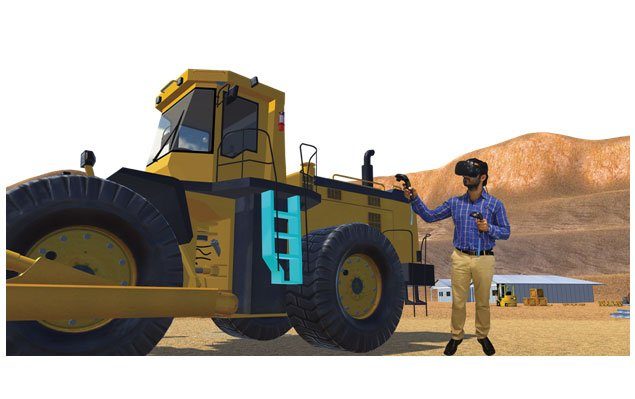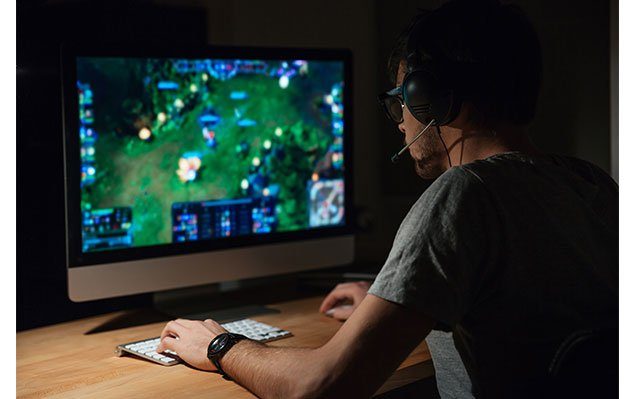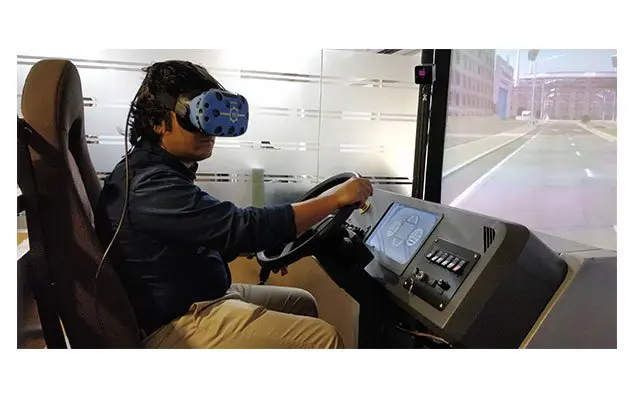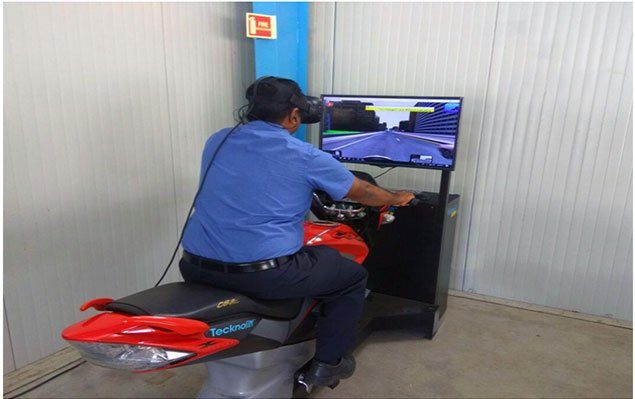VR Training has rapidly become one of the most valuable tools for organizations to extend classroom and eLearning courses. It can not only improve knowledge retention and employee experiences but also yield great results in terms of end-customer experiences.
The goal of Virtual Reality training is pretty simple — To create virtual scenarios that allow employees to experience their work in different demanding environments, take risks, and learn before they go out to handle real-world situations.
VR Training
Virtual reality or VR is a virtual environment that is created for a fully immersive user experience. Unlike the traditional user interfaces that only allow you to view through a two-dimensional screen, virtual reality offers a computer-generated, fully digital, three-dimensional experiential environment. In fact, when you put on VR headsets, it feels like you are transported to a new location, where you can look around, interact with things, and even inspect computer-animated objects. The idea behind VR is to simulate the different senses like hearing, vision, and even touch sometimes to bring users to a whole new world, virtually.
VR training uses virtually realistic environments for employee training by simulating different work environments that the employees are expected to deal with.
Types of VR Training
1- Non-immersive VR Training
In non-immersive virtual reality, there is a computer-generated environment created but the end users are always in control and aware of their physical environment. A perfect example of this type of technology is video games or computer games with displays, separate consoles and keyboards or joysticks.
2- Semi-immersive VR Training
With semi-immersive virtual reality, users only get the perception of being in a different world when they focus on the digital images or virtual worlds in front of them. Though the users are operating in a different environment. It’s important to note that the users still stay connected to their actual physical environment. This technology mostly includes 3D graphics displayed on a projection or LED screen with vertical reality depth that provides a more immersive experience. The visuals are connected to a physical simulator that replicates the functionality of the actual equipment or machine. Semi immersive virtual reality is used for hands on training and educational purposes by replicating the functionality and design of real-world mechanisms.
3- Fully-immersive VR Training
For a fully-immersive VR experience, users need VR glasses, a head point display, or VR headsets to get high resolution along with a completely wide field of view. It offers users the most realistic and immersive experience with both sound and sight. While this is majorly used for gaming and entertainment purposes, fully immersive VR can also be used for corporate or industrial VR training in several industries including Automotive, Mining. Aviation, Nuclear and Defense
Pros of VR Training
A more hands-on approach
There is only so much learning, traditional training can provide people. Even with videos and pictures to help them understand the right way to do things, employees don’t really understand exactly how to do things at work unless they get to perform those procedures or tasks on the field. This can often lead to problems or bottlenecks at work as new employees may take anywhere between weeks to months to operate at their full potential.
VR training gives people the opportunity to perform practical hands-on exercises as many times as they want before they get out on the field.
Make mistakes and learn from them
When you give employees a safe learning environment through VR training where they can make as many mistakes as they want and actually learn from the consequences of their mistakes, it directly leads to more learning opportunities and better results.
It also gives both instructors and trainees much-needed flexibility to solve different problems in different ways, in order to discover the best way forward. After all, even little improvements in productivity can go a long way.
Higher learning retention
Hands-on and immersive learning directly leads to higher learning retention since trainees are able to better grasp concepts and hone their skills. As compared to classroom training, virtual reality training gives people the opportunity to get a more realistic job experience, allowing them to understand important concepts faster.
Effective and Scalable Training
VR training enables more effective learning at a lower cost and in less time than many traditional learning methods. The VR training technology allows the management to view and review the performance and training retention of each trainee with the help of the inbuilt objective assessments systems. Because of its portability, VR training becomes a highly scalable form of training as it allows you to deliver standardized training across multiple locations without the need for employees or trainers to travel to the location.
Different Industries Leveraging VR Training
VR Training in Aviation
VR technology is being readily used in the aviation industry for aircraft inspection, aircraft maintenance (MRO training), cabin crew training, flight deck training, and even in-flight entertainment. Companies like SIA Engineering in Singapore use VR technology to help train their line maintenance team on aircraft maintenance.
It helps speed up the staff training by allowing employees to inspect virtual aircraft environments where they can walk around an airplane, detect any existing issues, and make sure all the necessary safety equipment is present in their right place. VR training also helps in quick turnaround of aircraft and lowers the unscheduled maintenance cost.
An American manufacturer of jet engines, Pratt and Whitney use VR technology to train their mechanics to expertly repair aircraft engines by troubleshooting different sceneries of aircraft failure.
VR Training in Automotive
Automotive industry giants like Maruti Suzuki, Toyota, Audi, BMW, Daimler and Volkswagen have already been using virtual environments for training their employees effectively for a few years now.
Volkswagen has developed over 30 simulation programs for employees in different verticals of the company. It is also building a digital reality hub that would include training programs, knowledge bases, and virtual meeting rooms where employees can interact, collaborate, and train.
Toyota India has deployed motorcycle simulators based in VR for training riders on safe riding procedures in a completely safe environment.
Audi has a comparatively complicated logistics system that requires employees to have a high level of accuracy. As a result, the company has created a VR training program in order to teach employees the logistics system thoroughly and prevent any errors. For its dealership employees, Audi has a game-like VR training program that simulates customer interactions to better prepare employees for the end customers.
Similarly, BMW also has a VR-based training system for customer service agents, assembly line employees, HR managers, and safety control officers.
VR Training in Mining
Safe mining operations, a very crucial part of mining. If anything, ever goes wrong, not only can it lead to fatal injuries to the ground staff, but also lead to loss of properties and revenue. To help deal with this problem, mining companies are now using VR to train operators on mine site familiarizations. It allows the mine staff including engineers, managers and equipment operators to familiarize themselves with the mine site before they begin operations on the actual site.

In fact, mining institutes like Goa Group Vocational Training Centre (GGVTC) and OEMs like BEML and Komatsu have invested in virtual reality training using physical simulators to train people on safe mining operations. This helps mining companies better analyze their mining techniques and improve efficiency.
Future of VR Training
Companies around the world are now introducing VR for corporate training, industrial training or skill development, from highly technical training like automotive assembly training and aircraft MRO training to safety training on standard operating procedures situations, where employees learn to handle everyday situations and emergency situations, VR is helping companies create a more safe and realistic training environment for employees.
While the initial setup cost is definitely high, organizations are readily understanding that in the long run, VR training can help reduce costs and improve ROI in terms of employee retention, training efficiency, safety and productivity
Tecknotrove Systems is Asia’s leading simulation company which offers customized virtual reality training solutions for organizations across various industries including Automotive, Aviation, Mining, and Nuclear. It develops customized VR training solutions to either supplement or replace traditional training with user-friendly immersive training modules.




